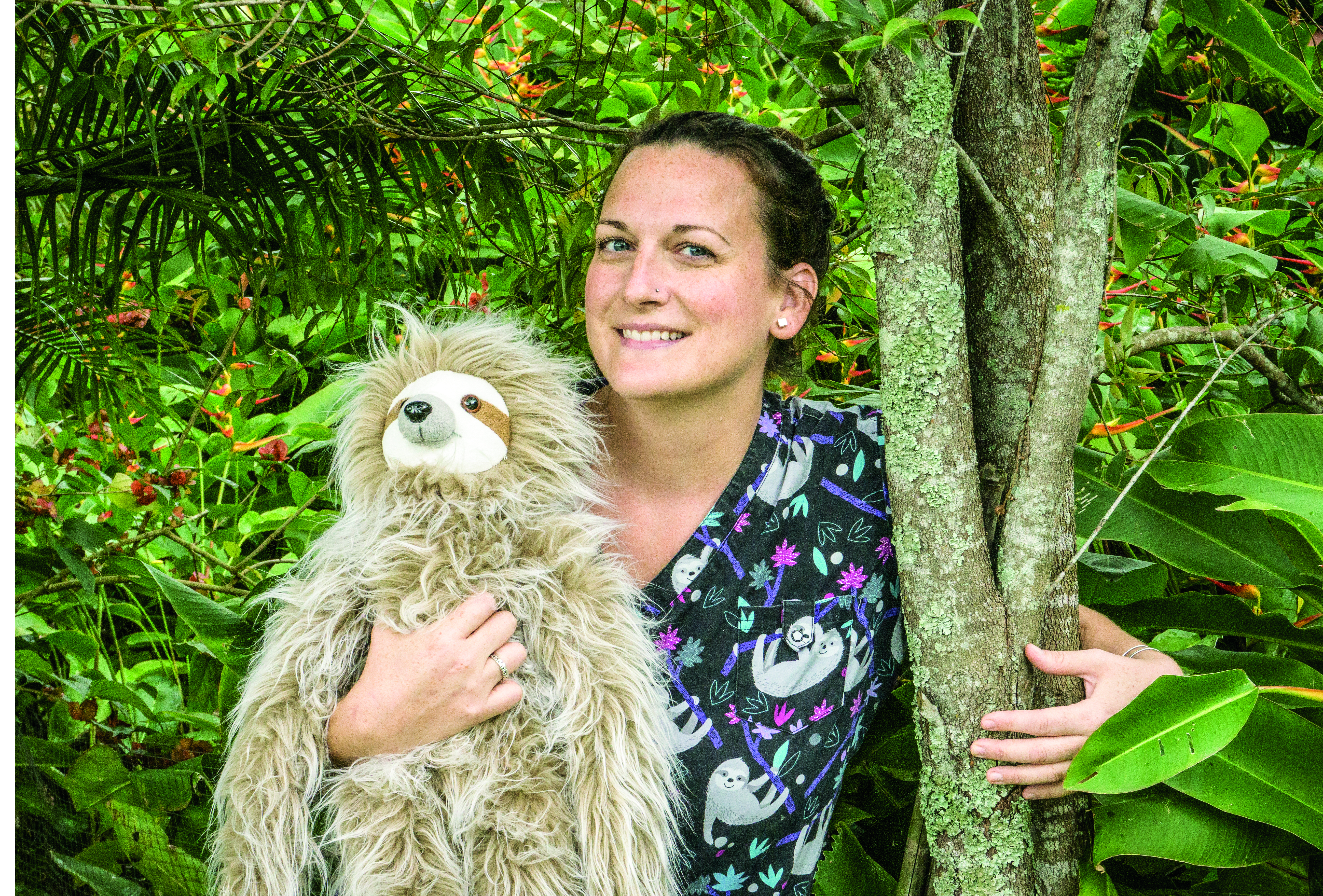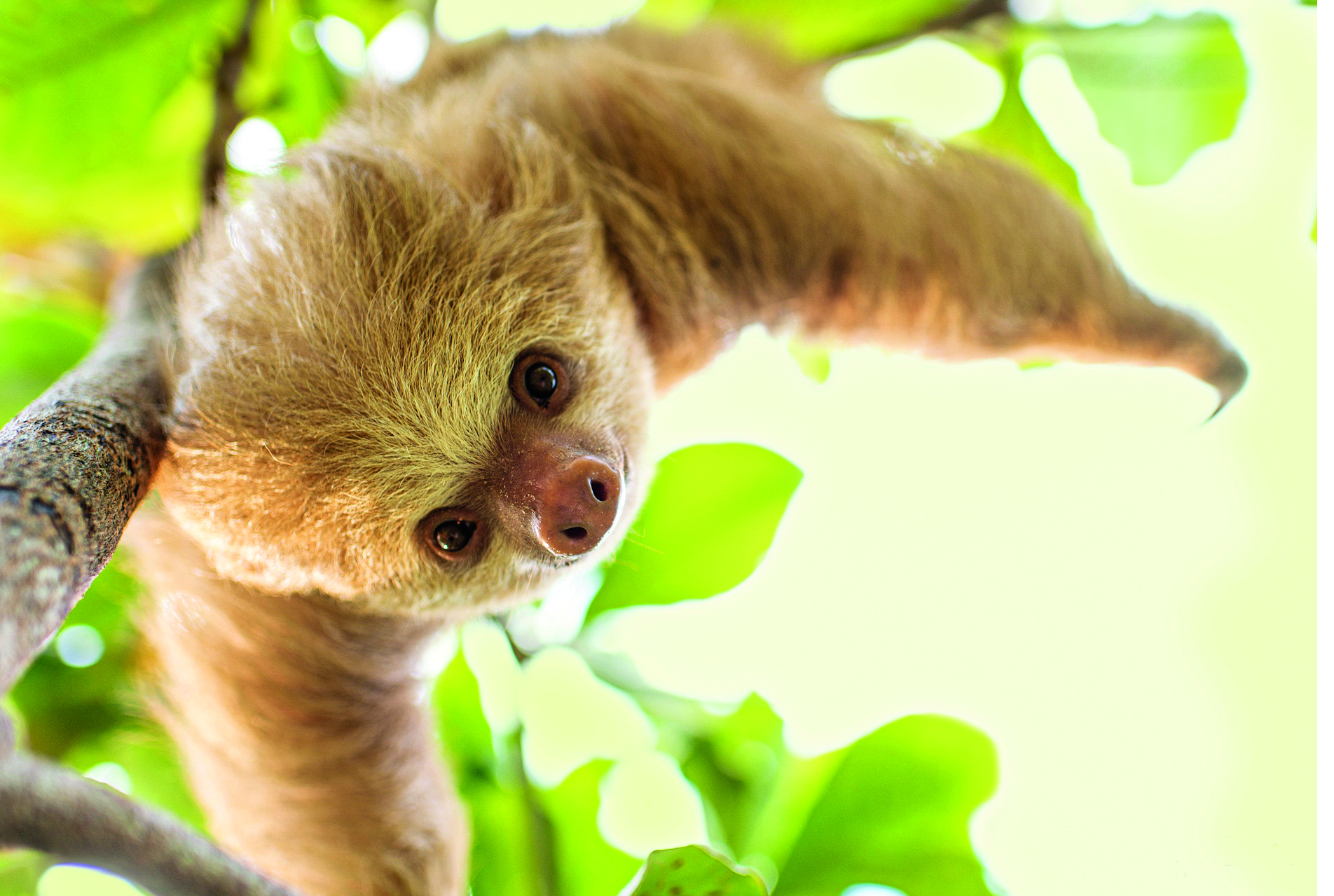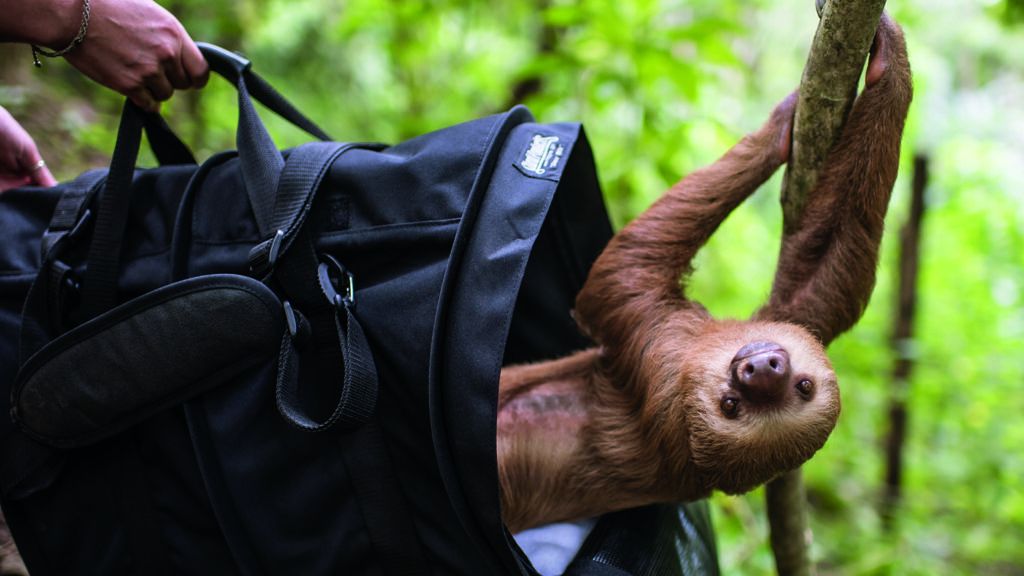Cars, electricity, tourism, deforestation, dogs: Sloths face so many dangers. But Sam Trull, co-founder of The Sloth Institute in Manuel Antonio, Costa Rica, is determined to do whatever it takes to keep them wild and free. In 2013, she left her life in America and dedicated herself to protecting this misunderstood mammal. The lifelong animal lover and traveler was eager to share how special these creatures are. And we were happy to listen.
Did you grow up with animals around?
Yes, my family lived in Durham, North Carolina, with a cat, dog, ferret and gerbils—plus goldfish I won at the state fair. Those goldfish lived for years! Our animals were all rescues. My mom taught us to have empathy and respect for all creatures. Even spiders—we would capture them and carefully take them outside.
How did you become interested in working with animals?
I was always a science and math enthusiast and, from a young age, knew I wanted to work with animals. I interned at the Duke Lemur Center in Durham for 12 years, while I earned a bachelor’s degree in zoology and a master’s in primate conservation. The center provides an amazing natural habitat, but in the winter, the lemurs need to stay inside for warmth. That reminded me the animals were in captivity, and I’d feel like I wasn’t doing enough. I really wanted to work with animals in the wild, so I traveled and ended up in Costa Rica, where I met my first sloth. And I never looked back.

It was nine years ago, and sloths weren’t as well-known as they are now. I was working at a rescue center that took in an orphaned baby sloth. Our challenge was to keep it alive because orphaned sloths often die. I had worked with primates in the past and used that experience—like understanding their dietary needs and how they can be physically handled—to help her survive. The next one survived too…and the next and so on.
These babies would grow up, but the question was how to safely release them. Previously, hand-raised sloths could not be released, but I couldn’t accept that. We came up with a way of releasing them very carefully, with tracking collars, so we could make sure they were okay. It’s a complicated and expensive process, so the only way to make it happen was to start an organization. I had a co-founder, Seda, an entrepreneur who was good at getting things started. She focused on the business and I focused on the animals. Before she retired, she taught me the business aspect.
Tell us how the tracking works.
We use the trackers to locate sloths twice a day for observation, data gathering and to make sure they’re okay. It’s kind of like the game Marco Polo, where the radios send signals back and forth to each other. We also do a health and weight check, but we have to wait until after they poop, because that can account for up to 30 percent of their body weight. The data helps prove they can adjust in the wild. We take note of what trees they eat and how they behave so we can share this information with other centers. This process has also shown that we can successfully release handicapped sloths.
And that’s your Rescue-Rehab-Release Program?
Yes, the sloths are rescued for all different reasons, but mainly because they’re injured or orphaned. Sloth babies are with their moms until they are 6 to 12 months old. Then they enter the dispersal phase, when they become independent. As for dangers, they can be injured by uninsulated electric wires. In developed areas that have been deforested, they’re forced to travel on the ground to find food, where they get attacked by dogs or hit by cars. We buy materials for the electric company to install guards that help make transformers and electrical wires safe. We get them from a U.S.-based company. They were originally created to protect animals like squirrels. Our goal is to safely get sloths back into the wild when they’re well.
What are sloth speedways?
We often need to direct sloths away from dangerous areas where there isn’t enough forest for them to travel by. We don’t want them to get to the road. In Manuel Antonio, where we are, trees are cut for development and also trimmed to ensure ocean views. If there is a big gap in the trees, sloths can’t jump, so they’ll come down to the ground where it’s more dangerous and it wastes their energy. We work to connect trees away from wires using rope bridges, or speedways. Sloths take the path of least resistance to find what they need.

Our institute is on the private property of the resort Tulemar. Anyone who stays at the resort, which has a protected forest, can go on a sloth walk (a nature walk in the forest), where we teach them about these misunderstood mammals. We also host interns who help with our research and rehabilitation for six-month stints. An important part of our education program is local fire departments, whom we teach how to safely remove sloths from wires so we can relocate them to a safer area. Sloths here are like cats in the United States.
How did your family and friends react to your work?
I had already traveled so much; they were used to that. As for Costa Rica, they thought I was going for a year, but after about three years, they knew it was more permanent. Now I’m married to a Costa Rican, Pedro, who is our assistant director and conservation director.
Is it difficult to get funding?
We’re a nonprofit, so we rely on donations, some small scientific grants and a few corporate sponsors. It’s a constant challenge. During the pandemic, our donations decreased, so we’re trying to catch up. We’d like to improve facilities, create more speedways, conserve the forests, make the country’s electricity safe and provide more training. And, of course, looming over everything is climate change.
What are your dreams for the institute?
I would love to get our own land with a protected forest for a habitat for the sloths, so we know they’re safe when they’re released.
What do you want people to know about sloths?
They’re not dumb and they’re not always happy. What looks like a smile on their face is not—it’s the permanent structure of their face. They don’t have facial expression muscles. People see them with their arms raised and think they’re waving. That actually means the sloths are stressed and want to attack. Taking a selfie with them, picking them up in the street without knowing what you’re doing—all these things stress them out. Sloths really are amazing creatures. The more people understand and appreciate them, the better off they’ll be.
For more information on how to “adopt” a sloth and support conservation efforts, visit theslothinstitute.org.
For more inspiring animal stories, subscribe to All God’s Creatures magazine.






